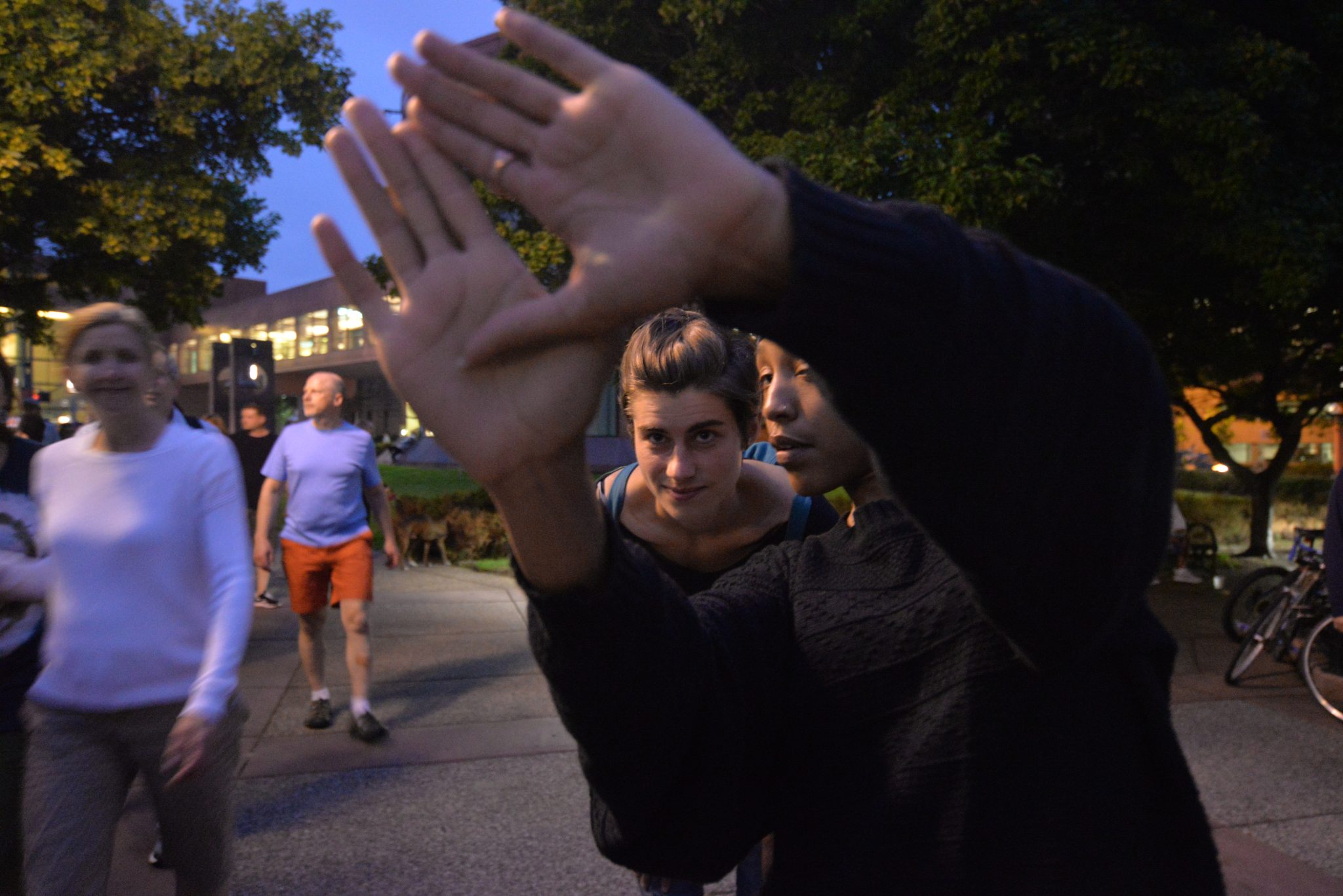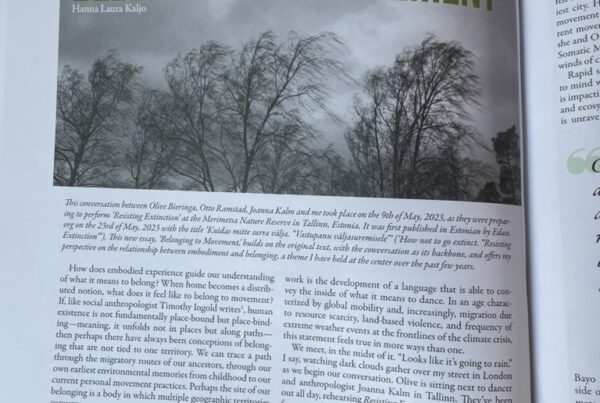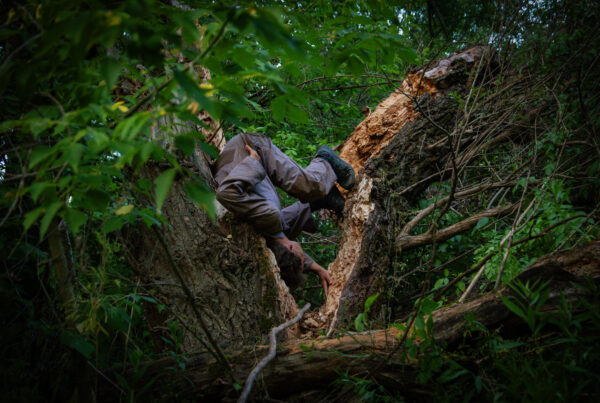by Chris Hewitt
Pioneer Press
July 16 2015
A dance performance by Body Cartography Project can be intimate. Very intimate.
“Closer,” the two-part piece Body Cartography is performing this summer, is about as up-close-and-personal as dance gets because it involves just two people: a dancer and one other person, who’s part audience/part performer. The dancer can be one of a few Body Cartography performers and the audience changes all the time. So, even more than most dance performances, every “Closer” is unique.
Performed at a variety of venues in the Twin Cities throughout the next two weeks, the first part of “Closer” is an experiment in how a piece of dance transforms both the performer and the audience member involved.
“People come up to a table and they’re booked in and we say, ‘Here’s Otto. He’s going to dance with you, and he’ll bring you back in 15 minutes,’ ” says Olive Bieringa, founder of Body Cartography and co-director with her husband, Otto Ramstad.
The second part, which will be presented at Red Eye Theater from Aug. 13-16, takes inspiration from those one-on-one experiences and turns that into a group performance that will evolve into a dance party.
“It comes out of the same question about how we are present with strangers, non-verbally,” says Bieringa, 45. “It’s, ‘How do we give our audience agency and how does the presence of the audience inform and inspire the dancers and choreographer?’ ”
Those are the kinds of questions that inform nearly all of the 18-year-old company’s work.
Body Cartography makes contemporary dances that seek to go deeper than most dance by making audience members feel something in their bones.
“I think most people who make dance want to move people in some way — to move them physically, emotionally, mentally. I want to generate movements and empathetic responsiveness in other peoples’ bodies,” Bieringa says. “As dancers, we live in a highly physical and empathetic realm in terms of the people we dance with. We want to bring our audiences into that heightened state of physicality.”
That’s not always easy. As Body Cartography has performed around the Twin Cities this summer, its dancers have learned a lot about how time of day, location and other factors influence “Closer.”
“Sometimes, it’s really easy and a pleasure and fun. Sometimes, it’s really hard,” Bieringa says. “Sometimes, you’re thinking, ‘I don’t know how to connect with this person.’ I think it’s just part of accepting the work in a way where you know it won’t necessarily succeed every time. There’s room for failure. But you also don’t know what the other person is thinking.
Sometimes, you think it’s been terrible, but they’ll say, ‘That was amazing for me!’ ”
Bieringa grew up in New Zealand and trained at the European Dance Development Center in the Netherlands before making her home in northern California. Ramstad joined Body Cartography in 1999 and, in 2001, they decided to relocate to Minneapolis’ Seward neighborhood, where Ramstad grew up.
“It’s been wonderful for us,” says Bieringa, citing support of the arts and the creative community as reasons for the relocation. “At the same time, I don’t want to live in New York City but I do love the amount of people who come through it, the cultural exchange. I do sometimes crave a slightly larger dance community, to challenge my own making of movement a bit. So we’re off to spend four months in Berlin once this show is finished.”
Meanwhile, there’s a lot of dancing to be done, the hope being that “Closer” will help people understand that movement is a language we all understand.
“Dance asks us to feel, be moved, to connect, be part of a community, engage our imaginations, cultivate empathy,” Bieringa says. “It’s something that can be pursued by anybody and everybody.”
However, as Bieringa’s answers to our eight questions reveal, some places are better than others.
Q. Where is your favorite place to be?
A. With a bunch of the people that dance with us, in a studio with a beautiful wood floor and lots of natural light and a door to the outside that leads to the Pacific Ocean.
Q. Whom do you admire most?
A. My daughter (Uma, 4).
Q. What was your first job?
A. I was a librarian at the public library in Wellington.
Q. What’s the best thing about your job?
A. That I get to make it all up.
Q. Who would play you in a movie?
A. Barbra Streisand. That’s a joke, really, of who I supposedly look like.
Q. What are you thinking about when a performance is about to begin?
A. I’m just trying to clear away all my expectations.
Q. What’s the scariest thing you’ve ever done?
A. I don’t know if this was the scariest but it was really, really hard. I stood up in front of a judging panel to explain a proposal, to pitch this project in front of all these people. I’m fine with public speaking — I do it a lot — but this specific group of people and the specific project made me really nervous.
Q. When did you know you wanted to dance?
A. Maybe when I was 18 or 19? I grew up in New Zealand and there wasn’t a frame for people to do much experimental work in the early ’80s, when I was coming out of high school. In my head, I thought I would go off and train in the visual arts but then I started traveling and discovered all these other worlds of dance. I had been dancing from when I was maybe 9 years old and I had always wanted to make stuff. And I’m like that now, too. It just happens to be (making stuff) on the medium of the body. Maybe in 10 or 15 years, I’ll be working with paint, instead.




